About Pomegranate Juice Recipe
When the weather is hot and sticky – I’m always looking for new ways to revive my body and spirit. I often turn to fruit juices during the summer, as they are filled with nutrients and are exceptionally refreshing. Pomegranate juice happens to be among my favorites, as it is one of the healthiest juices around. If you’ve worked with pomegranates in the past, you know they have a penchant for staining anything and everything that crosses their path. Lucky for you, my step-by-step tutorial shows you how to cut open the pomegranates and remove the seeds (arils) easily, without the juice falling all over the kitchen tiles or on your clothes. And if you don’t have a juicer on hand, there’s no reason to worry. My method to extract the juice from the pomegranate seeds (arils) uses a mixer-grinder or blender, meaning you don’t need any fancy equipment. Also, you can use any number of pomegranates considering the size of the blender jar you have. Note: If you use an electric juicer, then just add the pomegranate arils in the juicer and extract the juice. In the photos below, I have used locally grown organic pomegranates. These pomegranates had a light pink color, but were still very sweet. Depending on the variety, the seeds may have a deep crimson to a light pink color.
How to Choose a Good Pomegranate
As with most fruits, choosing a “good one” has to do with a few easy-to-observe traits. First, the fruit should be heavy for it’s size; this indicates that it is nice and juicy! You should also look for skin that is smooth and unblemished. Any punctures or breaches in the skin might indicate a pest made the fruit a home, and wrinkled skin means the fruit is past prime. The skin should also have a deep, richly pigmented color. Many commercially available pomegranates are the dark red variety, so look for a deep ruby tone on the skin. That said, there are MANY types of pomegranates out there! For example, my locally grown pomegranates had a more orange/fuchsia colored skin with yellow arils. Just look for bright, shiny and deeply colored skin.
Pomegranate Juice Benefits
If all this talk about one of my all-time favorite fruits hasn’t yet convinced you to make your own pomegranate juice at home, let me provide a bit more fodder for your mind. As one of the healthiest fruits around, they definitely deserve a spot in your diet. Pomegranates are known to have high levels of antioxidants like vitamin C, as well as important nutrients like vitamin K and folate. Pomegranate juice has long been a part of the holistic healing arsenal, and Western medicine has confirmed its efficacy at treating a number of different ailments. Some potential uses for pomegranate juice include:
reducing inflammationfighting cancerlowering blood pressure
With all of these potentially life-improving side effects, why wouldn’t you make pomegranate juice at home?? If you love to homemade juices, you can also explore all of my other Fruit Juice Recipes on the blog!
How to Prep Pomegranate
- Rinse 2 medium to large pomegranates. Slice off a thin piece of rind from the top.
- Cut each pomegranate in 4 parts.
- Take a bowl of water and place the quartered pomegranates in it.
- Keep the pomegranate immersed in water and use your fingers to remove the pomegranate seeds (arils). The seeds will settle down and the white pith will float to the top. Remove and discard the pith. 5. Drain all the water using a strainer.
How to Make Fresh Pomegranate Juice
6. Add the pomegranate arils to a blender, grinder or mixer jar. 7. Blend well. Remember that blending and crushing the seeds finely will give a gritty texture in the juice, which later you can strain using a fine mesh strainer. Alternatively you can simply crush the seeds slightly by using the pulse option in the blender or mixer, and extract the juice. 8. Take a pan or bowl and place the juice strainer on it. Now pour the pomegranate juice in a fine mesh strainer. 9. Using a spoon to press and stir it often, extract the juice. Press very well so that all juice is extracted. 10. Here’s the extracted pomegranate juice. 11. Pour in glasses and serve homemade Pomegranate Juice immediately. Enjoy! Note that if the taste and flavor of the juice is too strong for you, mix in some water or your preferred juice to dilute the juice and change the flavors slightly. Reference Links:https://www.healthline.com/https://www.medicalnewstoday.com/ Please be sure to rate the recipe in the recipe card or leave a comment below if you have made it. For more vegetarian inspirations, Sign Up for my emails or follow me on Instagram, Youtube, Facebook, Pinterest or Twitter. Watermelon Juice Recipe + How to Prep Apple Juice Recipe (2 Flavor Variations) Pineapple Juice Recipe Blueberry Juice This Pomegranate Juice recipe from the archives, originally published in May 2017 has been updated and republished on February 2023.
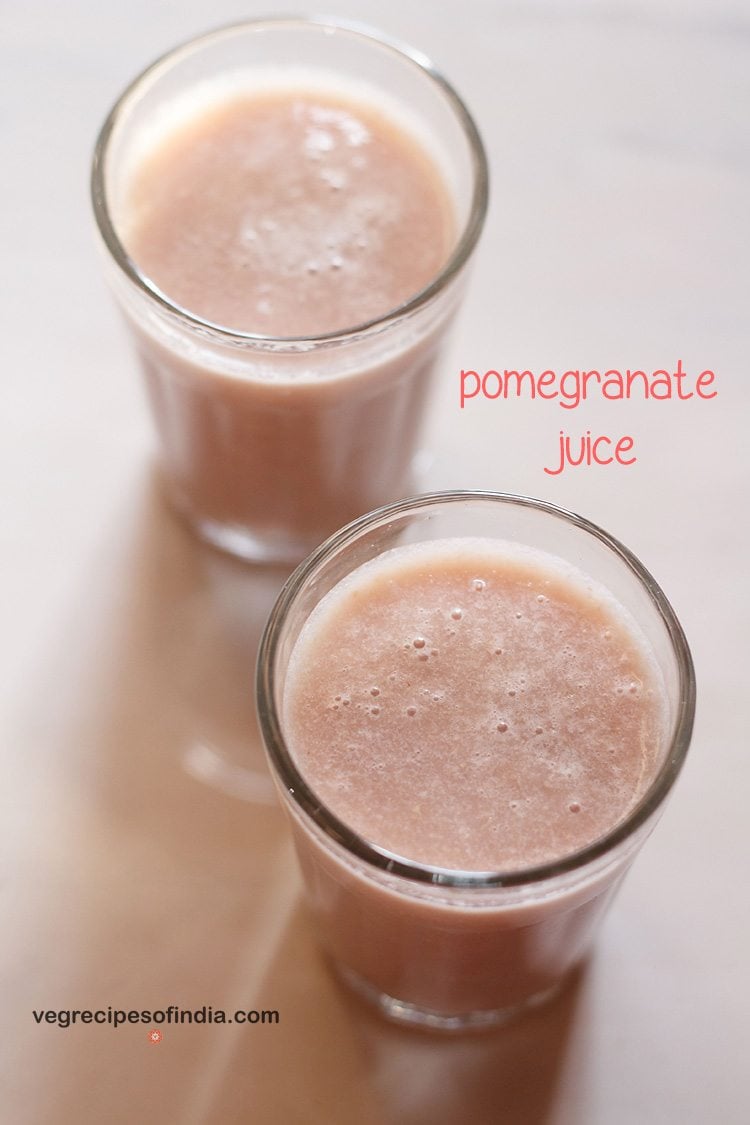
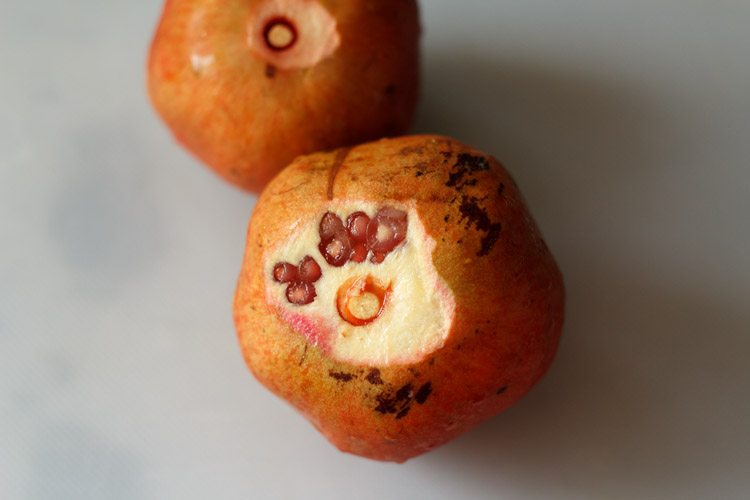
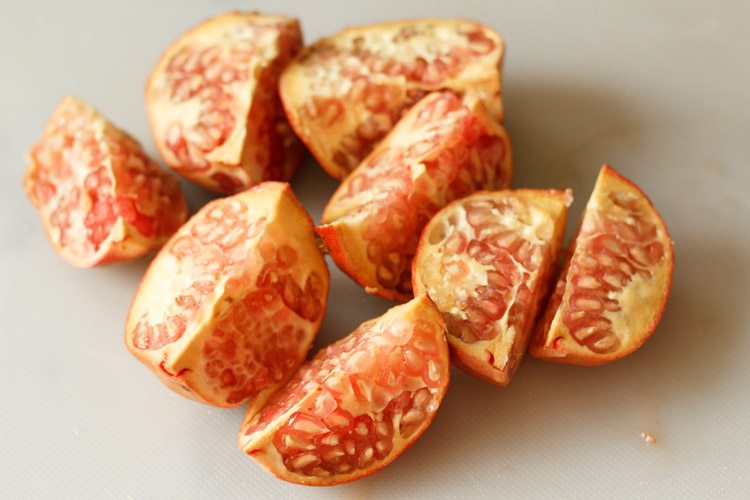
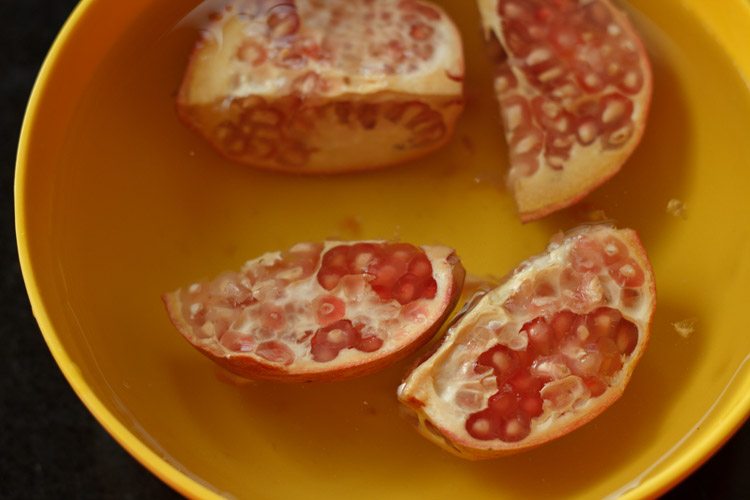
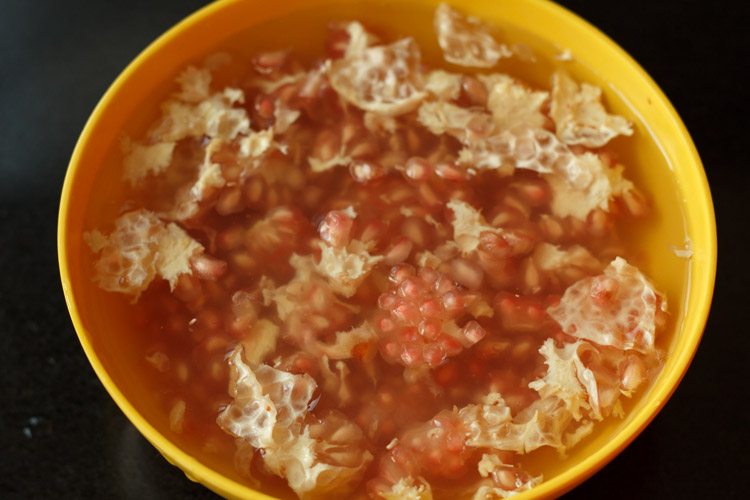
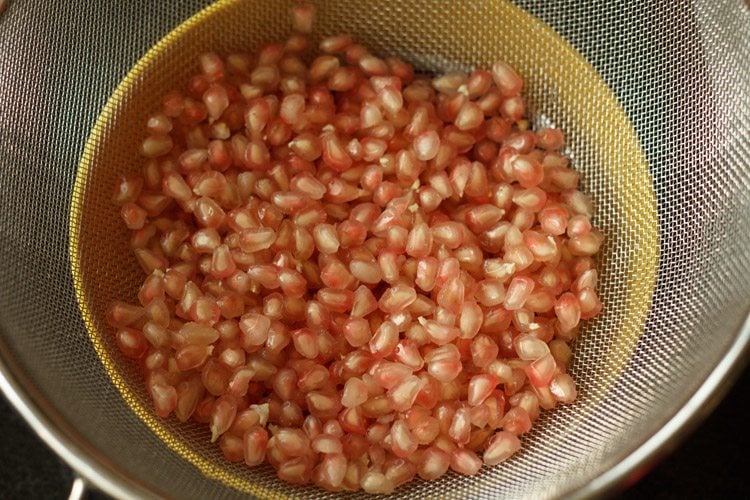
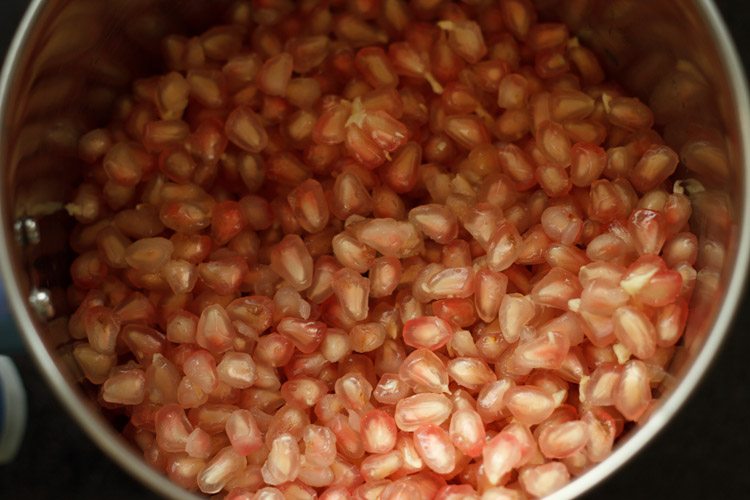
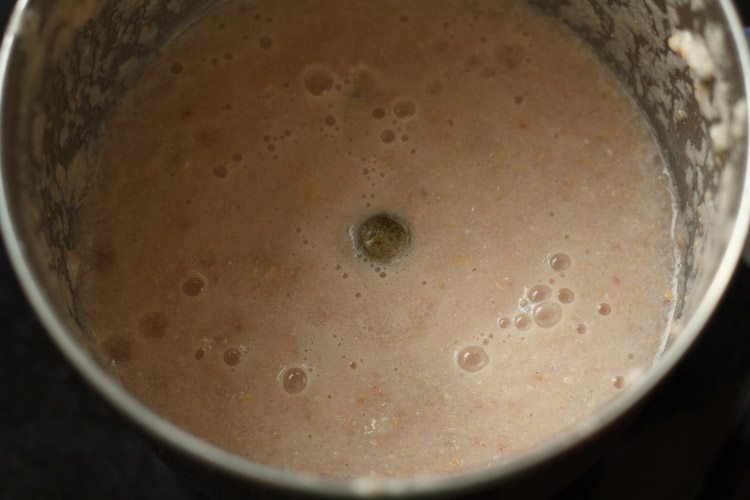
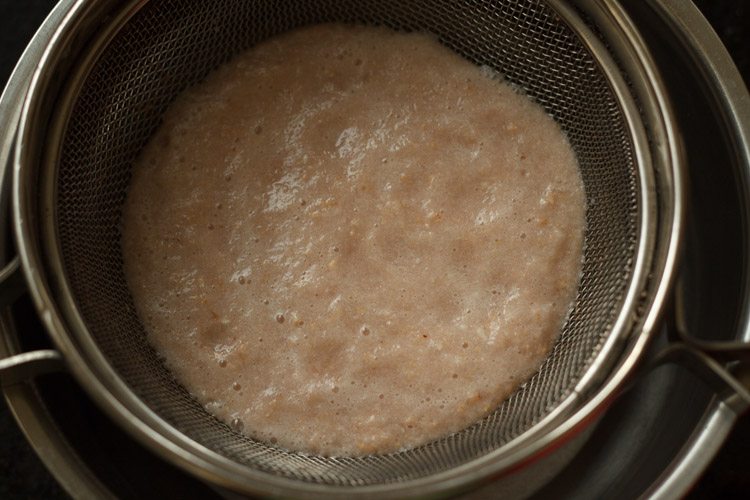
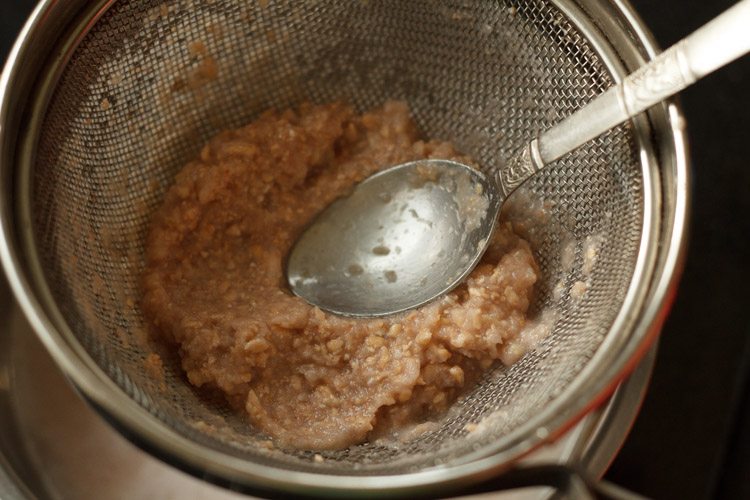
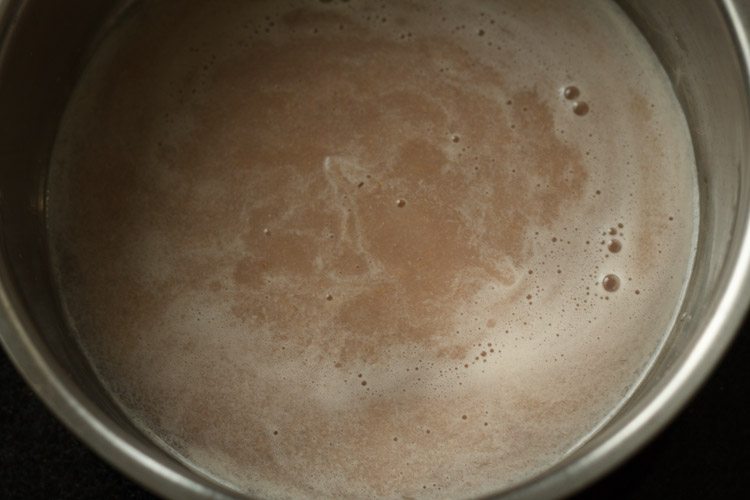
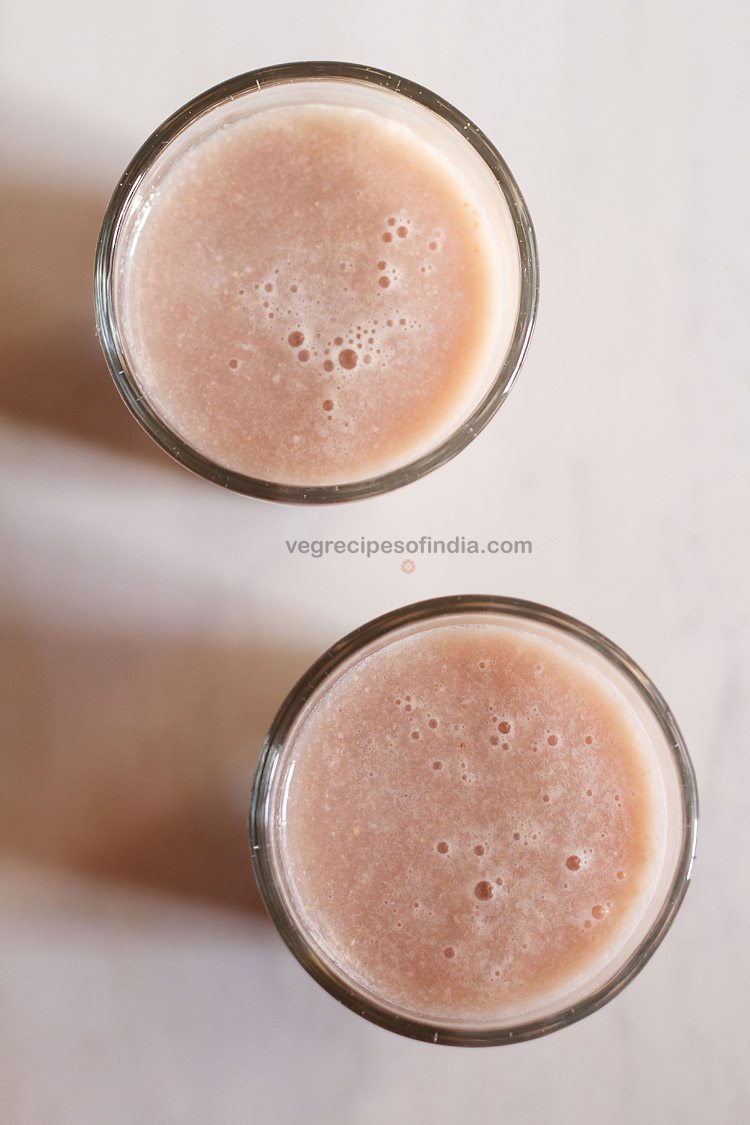

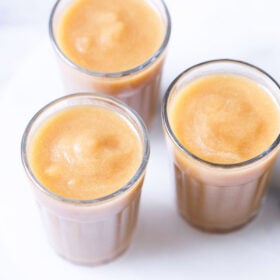

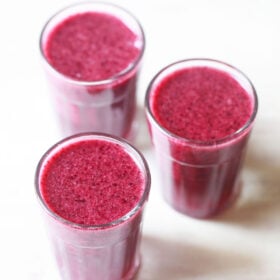
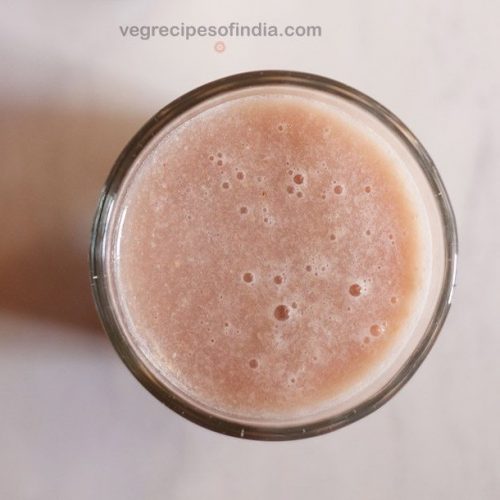
title: “Fresh Pomegranate Juice Anar Juice " ShowToc: true date: “2024-09-24” author: “Deanna Jordan”
About Pomegranate Juice Recipe
When the weather is hot and sticky – I’m always looking for new ways to revive my body and spirit. I often turn to fruit juices during the summer, as they are filled with nutrients and are exceptionally refreshing. Pomegranate juice happens to be among my favorites, as it is one of the healthiest juices around. If you’ve worked with pomegranates in the past, you know they have a penchant for staining anything and everything that crosses their path. Lucky for you, my step-by-step tutorial shows you how to cut open the pomegranates and remove the seeds (arils) easily, without the juice falling all over the kitchen tiles or on your clothes. And if you don’t have a juicer on hand, there’s no reason to worry. My method to extract the juice from the pomegranate seeds (arils) uses a mixer-grinder or blender, meaning you don’t need any fancy equipment. Also, you can use any number of pomegranates considering the size of the blender jar you have. Note: If you use an electric juicer, then just add the pomegranate arils in the juicer and extract the juice. In the photos below, I have used locally grown organic pomegranates. These pomegranates had a light pink color, but were still very sweet. Depending on the variety, the seeds may have a deep crimson to a light pink color.
How to Choose a Good Pomegranate
As with most fruits, choosing a “good one” has to do with a few easy-to-observe traits. First, the fruit should be heavy for it’s size; this indicates that it is nice and juicy! You should also look for skin that is smooth and unblemished. Any punctures or breaches in the skin might indicate a pest made the fruit a home, and wrinkled skin means the fruit is past prime. The skin should also have a deep, richly pigmented color. Many commercially available pomegranates are the dark red variety, so look for a deep ruby tone on the skin. That said, there are MANY types of pomegranates out there! For example, my locally grown pomegranates had a more orange/fuchsia colored skin with yellow arils. Just look for bright, shiny and deeply colored skin.
Pomegranate Juice Benefits
If all this talk about one of my all-time favorite fruits hasn’t yet convinced you to make your own pomegranate juice at home, let me provide a bit more fodder for your mind. As one of the healthiest fruits around, they definitely deserve a spot in your diet. Pomegranates are known to have high levels of antioxidants like vitamin C, as well as important nutrients like vitamin K and folate. Pomegranate juice has long been a part of the holistic healing arsenal, and Western medicine has confirmed its efficacy at treating a number of different ailments. Some potential uses for pomegranate juice include:
reducing inflammationfighting cancerlowering blood pressure
With all of these potentially life-improving side effects, why wouldn’t you make pomegranate juice at home?? If you love to homemade juices, you can also explore all of my other Fruit Juice Recipes on the blog!
How to Prep Pomegranate
- Rinse 2 medium to large pomegranates. Slice off a thin piece of rind from the top.
- Cut each pomegranate in 4 parts.
- Take a bowl of water and place the quartered pomegranates in it.
- Keep the pomegranate immersed in water and use your fingers to remove the pomegranate seeds (arils). The seeds will settle down and the white pith will float to the top. Remove and discard the pith. 5. Drain all the water using a strainer.
How to Make Fresh Pomegranate Juice
6. Add the pomegranate arils to a blender, grinder or mixer jar. 7. Blend well. Remember that blending and crushing the seeds finely will give a gritty texture in the juice, which later you can strain using a fine mesh strainer. Alternatively you can simply crush the seeds slightly by using the pulse option in the blender or mixer, and extract the juice. 8. Take a pan or bowl and place the juice strainer on it. Now pour the pomegranate juice in a fine mesh strainer. 9. Using a spoon to press and stir it often, extract the juice. Press very well so that all juice is extracted. 10. Here’s the extracted pomegranate juice. 11. Pour in glasses and serve homemade Pomegranate Juice immediately. Enjoy! Note that if the taste and flavor of the juice is too strong for you, mix in some water or your preferred juice to dilute the juice and change the flavors slightly. Reference Links:https://www.healthline.com/https://www.medicalnewstoday.com/ Please be sure to rate the recipe in the recipe card or leave a comment below if you have made it. For more vegetarian inspirations, Sign Up for my emails or follow me on Instagram, Youtube, Facebook, Pinterest or Twitter. Watermelon Juice Recipe + How to Prep Apple Juice Recipe (2 Flavor Variations) Pineapple Juice Recipe Blueberry Juice This Pomegranate Juice recipe from the archives, originally published in May 2017 has been updated and republished on February 2023.
















